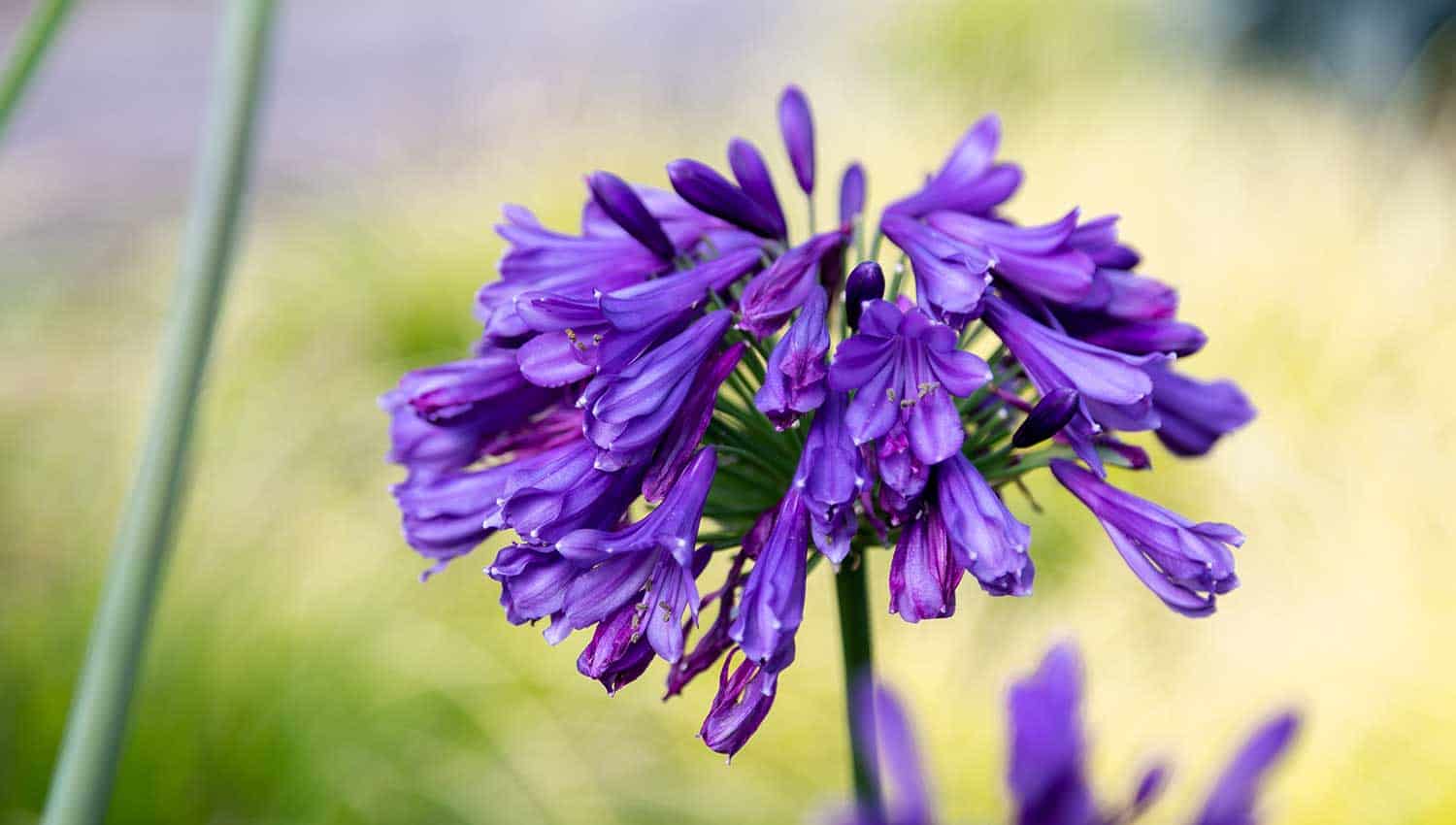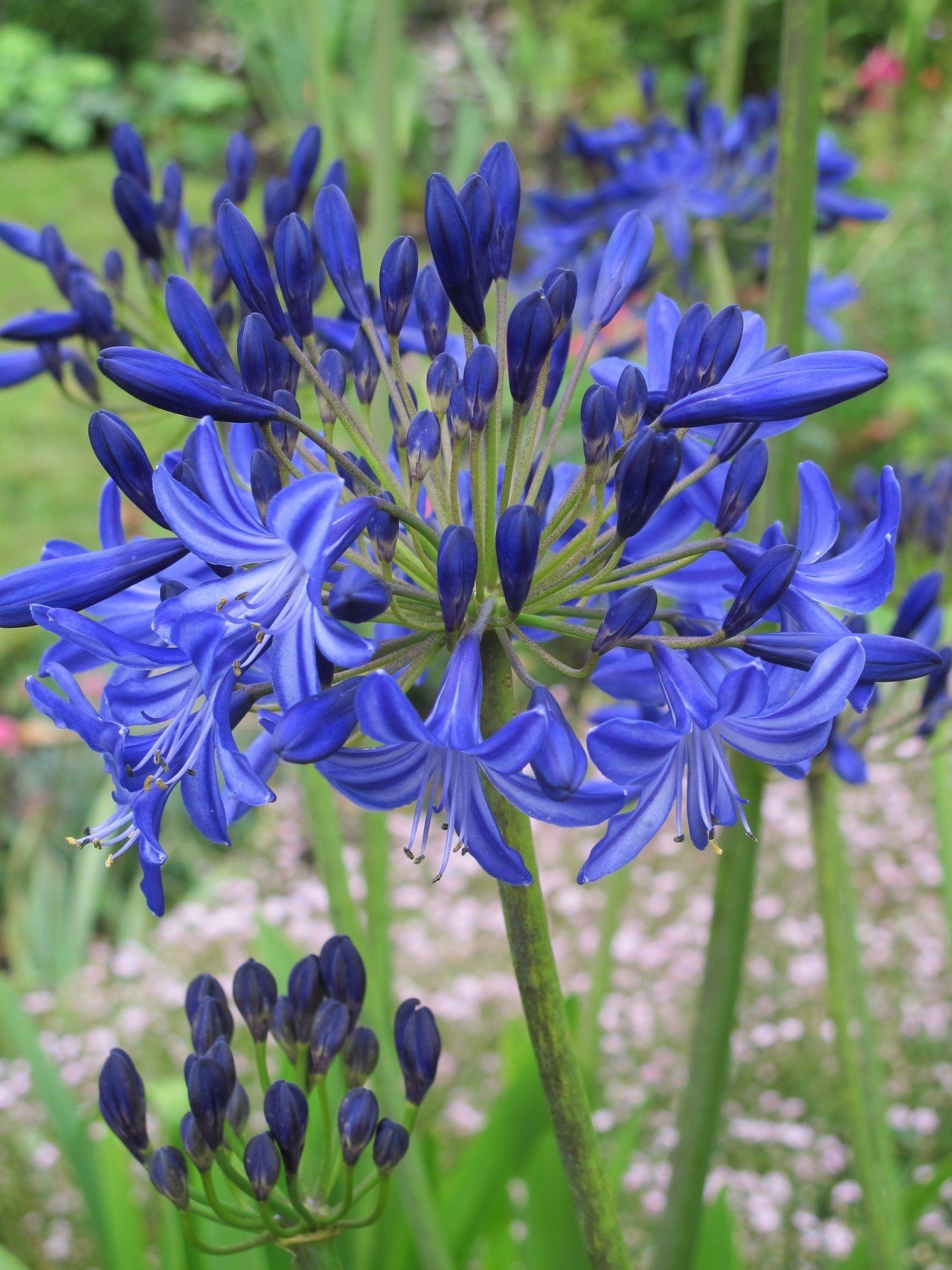Growing Agapanthus: A Complete Guide to Beautiful Blooms
Growing Agapanthus: A Complete Guide to Beautiful Blooms
Blog Article
Mastering the Art of Agapanthus Treatment: Crucial Steps for Healthy And Balanced Development and Dynamic Blossoms
In the world of cultivation, the growing of agapanthus stands as a rewarding venture for those that seek to support these elegant flowering plants. With their striking blooms and graceful vegetation, agapanthus has actually caught the interest of gardeners worldwide. Nonetheless, achieving ideal development and lively blooms calls for a nuanced approach that encompasses various crucial actions. From picking the best selection to mastering pruning methods, the trip in the direction of growing thriving agapanthus plants is complex and holds the crucial to opening the full potential of these botanical gems.

Picking the Right Agapanthus Selection

When choosing the right Agapanthus range for your yard, consider variables such as climate suitability, flower shade, and growth behavior. In addition, consider the environment in your area to make certain the Agapanthus selection you select can grow in your details conditions. Recognizing the development practice of different Agapanthus ranges is important for proper positioning within your garden.
Perfect Growing Conditions
Taking into consideration the ideal environmental needs is essential for effective Agapanthus farming. Agapanthus flourishes in well-draining soil with a somewhat acidic to neutral pH degree. When growing, choose a place that obtains full sunshine to partial shade. In hotter environments, providing some mid-day shade can stop scorching of the leaves. Agapanthus plants are delicate to cool temperature levels and must be shielded from frost throughout winter season.
To make sure healthy and balanced growth and lively flowers, plant Agapanthus bulbs at a deepness of regarding 2-4 inches and space them 8-12 inches apart. Mulching around the base of the plants aids preserve dampness and reduces weed growth.
Watering and Feeding Tips
Keeping appropriate wetness levels and offering necessary nutrients are essential aspects in the care regimen for Agapanthus plants. When it comes to sprinkling Agapanthus, it is crucial to strike a balance. These plants prefer regularly damp dirt yet are vulnerable to root rot if overwatered.
Feeding Agapanthus is necessary for advertising healthy growth and respected blossoms. Use a well balanced fertilizer, such as a 10-10-10 formula, in the early springtime as brand-new growth emerges. Repeat this application every 6-8 weeks throughout the expanding season. Avoid too much fertilization, as it can result in lavish vegetation at the expense of blossoms. Constantly adhere to the supplier's guidelines for appropriate dilution and application methods. By adhering to these watering and fertilizing tips, you can ensure your Agapanthus plants prosper and create vibrant, lasting flowers.
Trimming Techniques for Agapanthus
Pruning Agapanthus plants at the ideal times and with correct techniques is vital for keeping their health and wellness and promoting optimal development and blooming. The optimal time to trim Agapanthus is in late winter season or very early spring before new growth emerges.
For flowered stems, wait until the flowers have actually perished official source and then cut them back to the base. This not only cleans the plant's appearance however additionally encourages the development of new blossom buds. Deadheading spent blossoms can additionally reroute the plant's energy into generating even more blooms as opposed to setting seeds. However, Look At This if you intend to accumulate seeds for proliferation, leave some blossoms to completely dry and mature on the plant.
Remember to make use of tidy, sharp tools to make precise cuts and minimize the threat of introducing illness. Agapanthus. Routine trimming will certainly help keep your Agapanthus looking neat and healthy and balanced while making certain a plentiful display screen of attractive flowers
Taking Care Of Typical Bugs and Conditions
After making certain proper trimming methods for Agapanthus, it is crucial to resolve common bugs and illness that can influence the wellness and vitality of these plants. One usual pest that affects Agapanthus is the Agapanthus gall midget.
One more common problem is fungal fallen leave place, which offers as dark sores on the leaves. To stop fungal conditions, guarantee excellent air flow around the plants, prevent overhanging watering, and remove any kind of contaminated fallen leaves without delay. In addition, Agapanthus plants can experience origin rot if they are grown in badly draining pipes dirt. To stop this, plant Agapanthus in well-draining dirt and avoid overwatering. By being vigilant and taking punctual action against insects and illness, you can aid your Agapanthus plants flourish and produce vivid flowers.

Final Thought
In final thought, grasping the art of agapanthus treatment includes selecting the best variety, providing perfect planting conditions, appropriate watering and fertilizing, suitable pruning methods, and resolving typical pests and conditions. By complying with these essential steps, you can make sure healthy and balanced growth and vivid flowers for your agapanthus plants. Remember to on a regular basis check and keep your plants to advertise their overall wellness and longevity.
To make certain healthy growth and lively blossoms, plant Agapanthus light bulbs at a depth of regarding 2-4 inches and room them 8-12 inches apart. By complying with these watering and fertilizing pointers, you can ensure your Agapanthus plants grow and create vivid, durable flowers.
One common bug that affects Agapanthus is the Agapanthus gall midget. Furthermore, Agapanthus plants can experience from root rot if they are planted in poorly draining pipes soil. great site By following these important actions, you can make certain healthy development and dynamic flowers for your agapanthus plants.
Report this page